Travel provides many things. Through experiences, education and understanding we’re more informed of, and tuned to, the elements that bring alive the broad range of culture, history, language, geography, arts and cuisine. It can also just provide a change of pace, of scenery, of perspective that is so good for the psyche. A terrific upbeat subject for a future blog.
However one unexpected thing it has given me is a window into some dark spaces in the planet’s recent history – specifically that within my lifetime. This is a personal blog, drawn entirely from the places I have been, and encounters I’ve had, that have informed, shaped and in some cases shaken me – and some of the lessons that I think can be extracted. It is said that when you return from travelling nothing has changed – except you.
I have chosen twenty-six examples, and have populated the events with my own photographs.
These events have been presented not in chronological order (noted by the year of my visit in brackets) but by the underlying theme associated with them. The themes overlap, but are a convenient way to categorize.
It has also presented an opportunity to highlight elements of important political and/or historical context and some of the more global consequences of these dark events, though it is not meant to be a history treatise.
Some conclusions have been proposed at the end.
NOTICE: YOU DON’T HAVE TO READ ANYTHING ELSE NOW. IF YOU WANT TO GO STRAIGHT TO MY CONCLUSIONS, HEAD TO THE END.
THIS MIDDLE PART IS MADE UP OF MY TRAVEL ANECDOTES WHERE I ENCOUNTERED THESE DARKER EVENTS, PLUS SOME OF THEIR POLITICAL OR HISTORICAL CONSEQUENCES INCLUDING THE KEY PROTAGONISTS.
I’ll start with a grouping relevant to the Second World War, as I encountered the impact of it a few different ways.
Theme: Second World War; Nazism; Holocaust
London, England (1954): It was a long time ago, but it still has a freshness in my mind. When I was quite young my father brought my older sister and me to England to visit his family and the places of his early childhood. (That’s where he was born and lived until he was 30.) The two things about London that remain fresh in my mind were, firstly, a great deal of damage was still evident resulting from the eight months of German bombing starting September 1940. I clearly remember St. Paul’s Cathedral, the tallest building in London (from 1710 to 1963) which miraculously survived the Blitz. Secondly, food and fuel rations were only just then being lifted.
The family home in London’s South Kensington area had been hit by an incendiary bomb that fortunately didn’t detonate, saving it from destruction. I listened, with wide eyes, to stories of the Blitz, and the kinds of bombs that fell and the noises the different ones made (or didn’t make, as when the noise of the V1 buzz bombs, or “doodlebugs”, stopped, meaning they were about to hit). I heard how my aunts, uncles and cousins went about their daily lives. (One of my aunts for example drove a mobile telephone exchange around London.) This was my first encounter with what this thing called “war” was really about.
My selected photo is one I didn’t take. It is of St. Paul’s Cathedral taken by photographer Herbert Mason in the early hours of December 30, 1940, in the most terrible days of the Blitz. It has become a marker of British resilience and courage, and is considered one of the iconic images of the Blitz. It became “instantly famous”, and turned the Cathedral into “a symbol of togetherness, survival and suffering.”
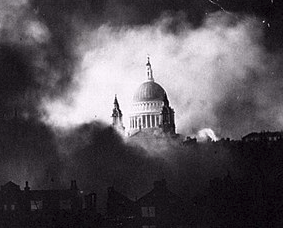
Dieppe, France (2012): I chose to highlight the beaches of Dieppe from the many WWI and II areas of conflict I have visited around Europe. It wasn’t the biggest or most strategic encounter but it was primarily a Canadian-led battle, with a deadly outcome. On August 19, 1942 6,000 soldiers landed on this beach, 5,000 of them Canadian in the only large-scale assault on the coast of German-occupied France prior to the massive Allied landings in Normandy in June 1944. Within ten hours 3,623 had been killed (900 of them), wounded or became prisoners of war.
My photo is of a memorial on the beach to a Canadian unit, the Essex Scottish Regiment, which suffered 121 fatalities of 553 who landed. Only 51 returned to England. The beach looks so quiet and innocent now.
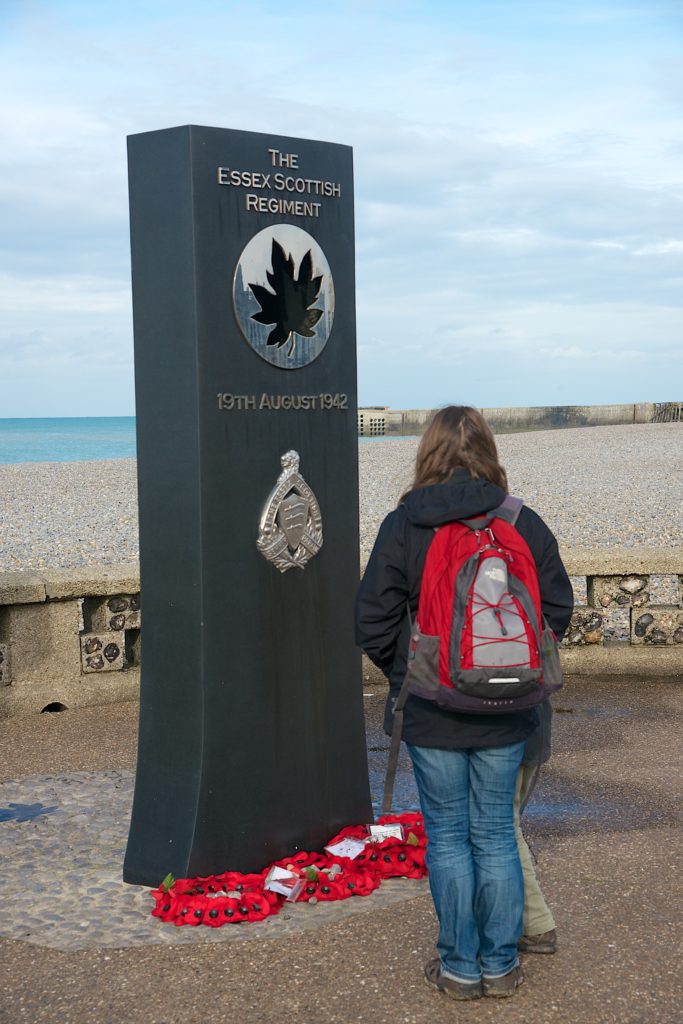
Guernsey, Channel Islands (2012): Evidence of the German occupation of these islands off the coast of Britain for five long years during WWII was still apparent as I explored the largest island: thick concrete gun placements and fortifications remain. But it was in visiting La Valette Underground Military Museum that things became focussed. From the memorabilia, recreations, posters describing the German rules, and photographs, the grim business of living with an occupying force emerged. The reality that the population nearly starved to death near the end was more horrible than the harsh penalties inflicted by the Germans.
The selected picture is of a poster on the unambiguous dangers of not cooperating with the Nazis.
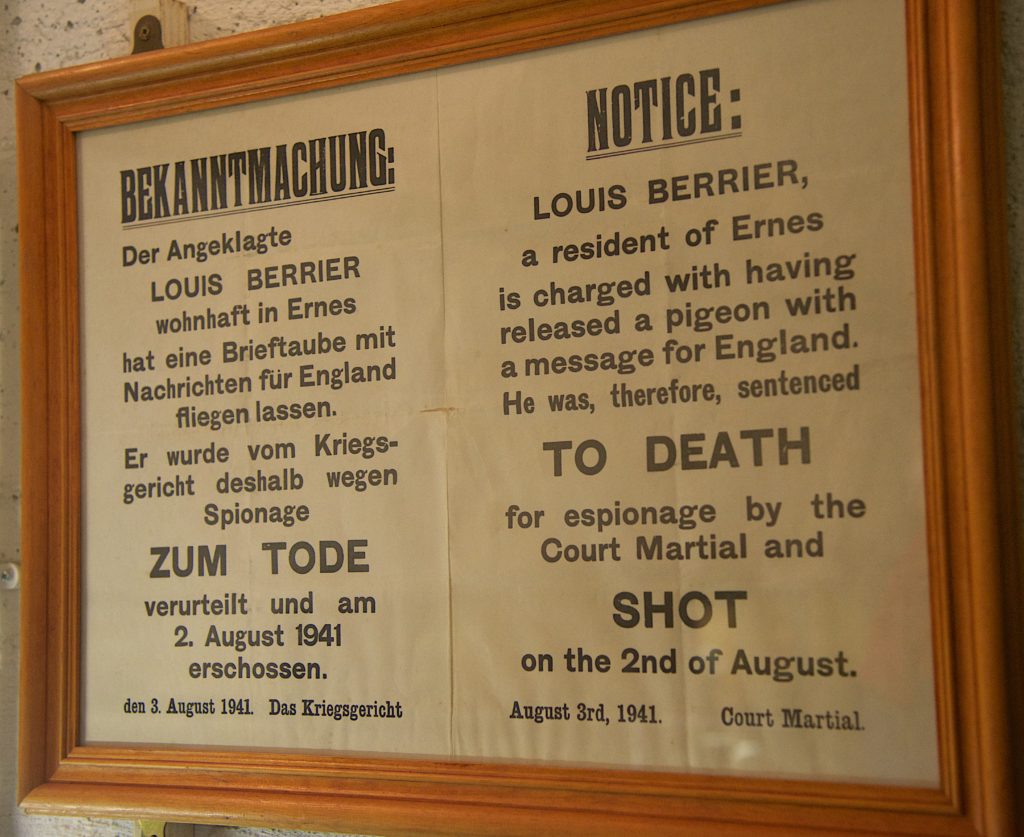
Nürnberg, Germany (2005): While a classic old Bavarian city and a leading European cultural centre, the city has another fame. The annual rallies of the Nazi Party in Germany were large propaganda events held at the rally grounds here from 1933 to 1938 (the “Nürnberg Rallies”). As I looked out over the grounds I could imagine Adolf Hitler stirring up his audience
Political/historical observations: It was fitting that this city was chosen as the site of the series of military tribunals that took place right after the war to convict those responsible for the Holocaust. The first and best known of the trials was that of the major war criminals before the International Military Tribunal (IMT). It was described as “the greatest trial in history” by one of the British judges present. The Tribunal was given the task of trying 24 of the most important political and military leaders of the Third Reich. The very concept of an international war crimes tribunal was legitimized here in this city.
To the question of how a nation, and a continent, could put the Nazi past behind them and start afresh, the historian Tony Judt put it thus in his book Postwar: A History of Europe Since 1945, “This distrust of short-term memory, the search for serviceable myths of anti-Fascism – for a Germany of anti-Nazis, a France of Resisters or a Poland of victims was the most important invisible legacy of World War Two in Europe…Without such collective amnesia, Europe’s astonishing post-war recovery would not have been possible.” Recently Hitler biographer, Volker Ullrich, has suggested that it has been more convenient in Germany to “imagine Hitler as an embodiment of the devil,” This “not only obscured the view of the real person but also served as an excellent way to relieve blame among German society, especially social elites, in the rise of Hitler and the crimes of Nazism.”
The first stock photo is of Hitler speaking; the second is one I took of the Nazi party rally grounds layout, ground zero for his long, personally crafted speeches, where he would start quietly and end up in a rage.

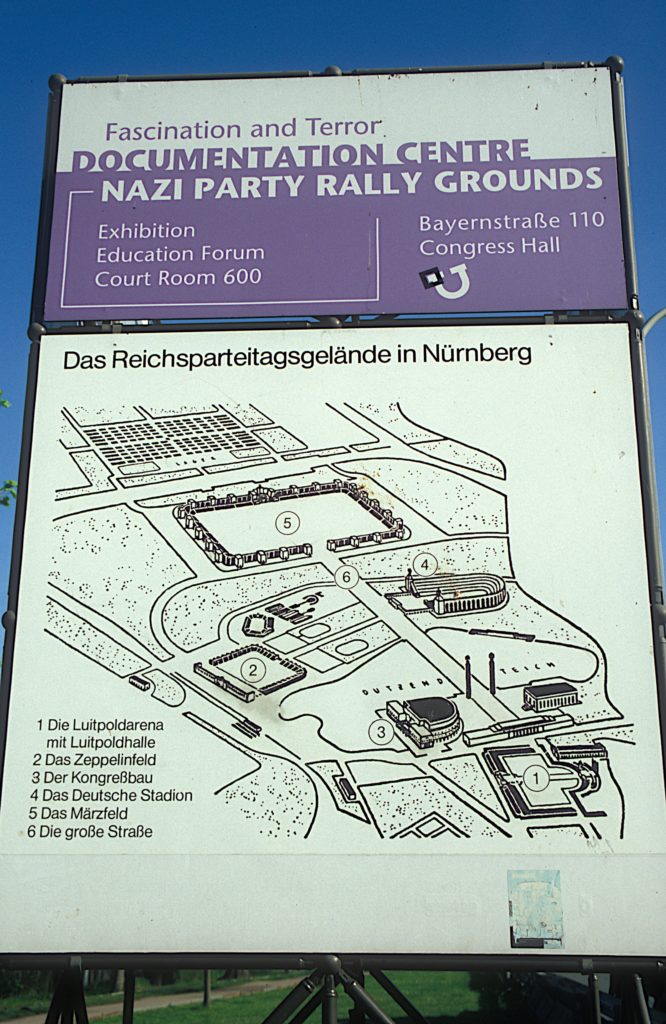
Theme: Second World War, Japanese Involvement
Hiroshima, Japan (1987): A moving, as well disturbing, experience occurred in my first visit to Japan. It was in Hiroshima at the memorial to those who died as a result of the August 6, 1945 “Liitttle Boy” atomic bomb dropped by an American B-29 Superfortress. It directly killed at least 70,000 people (and eventually up to 145,000 people; they are still counting). There was also a strange flavour presented in the words that accompanied the photos on the displays, with some implying that the Japanese felt they were innocent victims. I wonder if that same wording exists today.
Political/historical observations: After the Japanese military occupation of Saigon and Cambodia in July 1941, the US government imposed trade sanctions on Japan, including the freezing of Japanese assets in the US and an embargo of oil exports to Japan. American demands were made for Japan to withdraw from China and French Indochina in late November 1941. Japan reacted in such a way that eventually determined the outcome of the war four years later: Emperor Hirohito approved the plan presented to him by Prime Minister Hideki Tōjō for the attack on Pearl Harbor which was carried out by Admiral Yamamota on December 7, 1941, thus bringing the US into WWII.
In Japan there remains persistent pressure to apologize to wartime victims (the comfort women; allied prisoners of war; survivors of the 1937 Nanking Massacre – which is not in their textbooks, in fact only cursory treatment is given to WWII in those textbooks; the medical experiments in China on living subjects, etc.). Erna Paris, in her book Long Shadows: Truth, Lies and History examines the unwillingness in Japan to examine war crimes committed by the Japanese rather than those committed against them.
My photo is of one of the displays showing photos of the atomic bomb horrors, taken by the US Strategic Bombing Survey Team late 1945.

Theme: Communism, Soviet Style
Berlin, Germany (1990): A few months after the Berlin Wall came down I visited the city and wanted to see the result, and explore both Berlins. The reunification ceremonies had just concluded between East and West Berlin. I even bought, and still have, a piece of the wall sold to me by an entrepreneur, covered in the paint used by demonstrators (before they started shooting people for coming too close to the wall). I explored the monochromatic, crumbling suburban dormitories of East Berlin. This was quite a contrast to the lively flourishing West Berlin. Knowing the wall had been erected in 1961 (under the watch of Russia’s Nikita Khrushchev), nearly thirty years before, I felt a real sense of history; the wall went up and then down in my lifetime.
My photos include one I found of the start of the wall construction in 1961; the second is one I took of the wall remains plus an old pill box guard house.

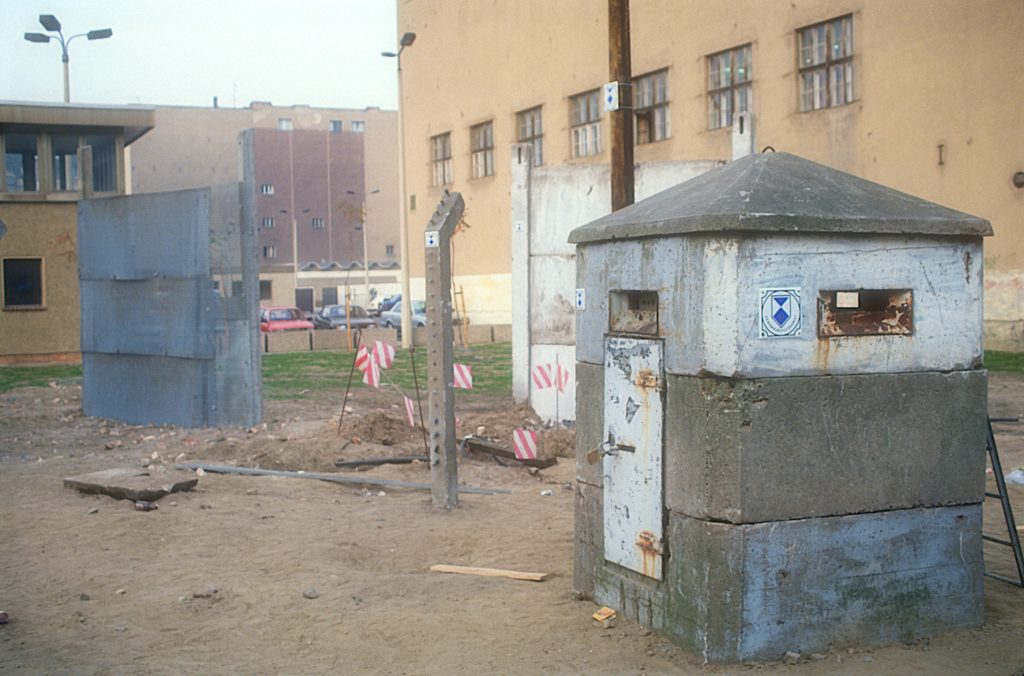
Budapest, Hungary (2005): A glimpse of the city’s dark past was attained when I toured a foreboding steel-grey building – #60 on the elegant Andrassy Boulevard. It’s called the House of Terror, as back in 1944 the building was the party headquarters for the Hungarian Nazis. (They called it “The House of Loyalty”!) Then, from 1945 to 1956, the notorious Communist secret police organizations (the AVO and its successor, the AVH) took up residence. The security officers killed without hesitation. They forced confessions or executed without trial. The AVH moved out in 1956 but the Soviets continued their control for many decades. The last Soviet troops didn’t leave the city – and the country – until 1991, shortly before the collapse of the USSR. The grim holding cells and crude execution chamber in the basement were part of a sobering tour. Nazis then the Stasi, one after the other – a grim history.
Political/historical observations: In 1956 a nationwide revolution against the one-party Hungarian socialist state and its Soviet-imposed policies was the first major threat to Soviet control since the Red Army drove Nazi Germany from its territory at the end of WWII. Hungary was the country where Soviet-style Communism would begin to lose its appeal. Nikita Khrushchev’s view was that if the “counterrevolution” got out of hand in Hungary, he would have to intervene. It did, and he did: on November 4, 1956 Soviet forces took Budapest. Over 2% of the population fled the country.
The Hungarian uprising had a shattering impact on the shape of world affairs. To quote Judt again “1956 represented the defeat and collapse of the revolutionary myth so successfully cultivated by Lenin and his heirs”. The failure of Communism in Hungary was important. Even Boris Yeltsin would acknowledge this in 1992 (this was three years after opposition forces brought about the end of communism in Hungary by a peaceful transition) when he said “The tragedy of 1956… will forever remain an indelible spot on the Soviet regime.”
My photo is a wall full of photos of the victims killed in this prison.

Tallinn, Estonia (2014): Tallinn is a beautiful city, but has had it share of tragedies. My visit to the famous Hotel Viru and the KGB Museum on the top floor of the hotel was revealing: all the rooms during the time the hotel was built in 1972 until the Soviets left Estonia in 1991 had been fully bugged with sound and fish-eye cameras. Even tables in the restaurant had devices built into them. The locals joked that the hotel was made of micro concrete; they were referring to the number of microphones hidden in the walls. The top floor was not even marked as existing; the elevator stopped at level 22, the floor
below. Inside the museum on this rogue floor was all the bugging and spy gadgets de rigueur for the KGB.
Political/historical observations: There was not a lot of love lost for the Soviet intruders to this country. The city was occupied by the Soviets in 1940. It was then taken over by the Germans from 1941 to 1944, when retaken by the Soviets and their rule was re-established by force. Sovietization followed, which was mostly carried out between 1944 and 1950. All private farms were confiscated, and farmers were made to join the collective farms. An armed resistance movement was active; mass deportations took place. The punitive actions decreased rapidly after Joseph Stalin’s death in 1953. In 1991 Estonian independence was declared. Our articulate guide stated with some passion “The Russians say they liberated us; but Estonians feel the Russians conquered us…The Germans were civilized compared to the Russians”.
My photo shows a collection of the spying tools and recording equipment.
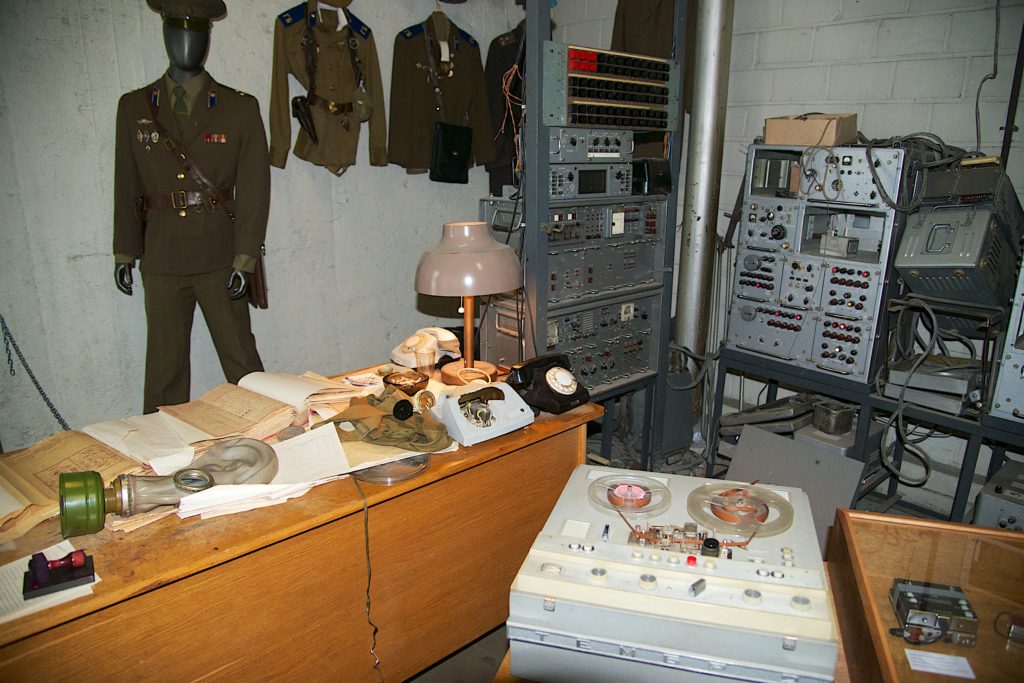
Havana, Cuba (2010): My visit to this country gave me a sense of the revolution, inspired and led by Fidel Castro in 1959. There is a rag-tag collection of miscellaneous revolutionary paraphernalia and disjointed information, including denouncements of the United States, contained in the Museo National de los Comités de Defensa de la Revolucion 28 de Septiembre. (Castro, known for his long winded speeches, must have named this museum.) One anecdote explains a lot about the crazy upside-down nature of the political philosophy that still remains imbedded in this country, such that it is determined that all are created equal so all jobs are valued equally. I was fortunate to be invited to dinner in the home of our local guide. The surgeon husband of our hostess was hitchhiking to work the next morning to carry our what he expected to be a sixteen-hour kidney transplant operation. He could not afford a car as his salary was only slightly more than the hospital cleaning staff.
Political/historical observations: In 1961 an unsuccessful invasion of Cuba by Cuban exiles attempting to overthrow Castro took place at the Bay of Pigs, covertly financed and directed by the US. This US foreign affairs disaster pushed Cuba closer to the Soviet Union, setting the stage for the 1962 Cuban missile crisis. History indicates now that the world came close to a nuclear catastrophe that year.
My photo is of the “pirate launch used by the mercenaries during the invasion” of 1961 – on display in the museum.

Theme: Communism, Chinese Style
Beijing, China (2010): I walked all around Tiananmen Square. Completed in 1959, it is the largest public square in the world. Mao Zedong conceived the square to project the enormity of the Communist party and contained in it is a large monument to the heroes of the revolution and of course a huge picture of Mao himself.
Political/historical observations: The square is also the place where a massive student demonstration (and the counter response) took place in 1989 to voice their discontent with China’s authoritative communist government, demanding also to meet with Premier Li Peng. As I wandered around my guide refused to acknowledge the enormity of the event and the actual number of protesters killed (the “true” estimate is likely over 2,000). This is just one example of the control over the message exercised by the Communist Party of China, now since 2018 under the direction of Xi Jinping, a de facto Emperor, unconstrained and with no term limit.
My photo is is taken in the square, with Mao smiling benignly and a guard stiff at attention in the foreground.
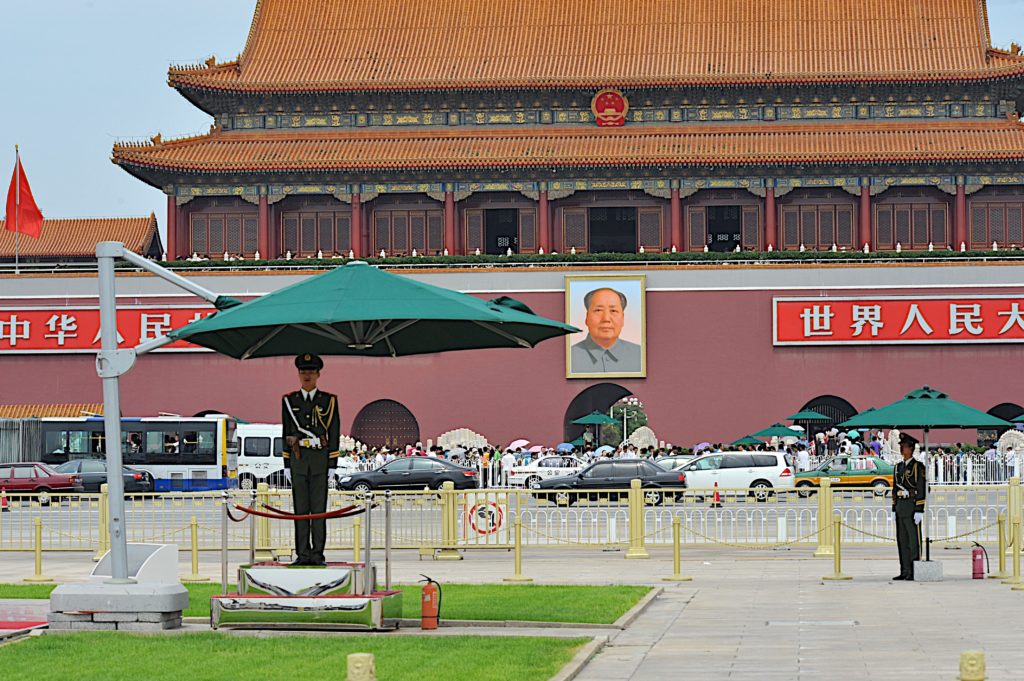
Ho Chi Minh City, Vietnam (2003): Near this city, formerly Saigon, I climbed down into the infamous Cu Chi tunnels, part of a vast network of connecting passages which were used by Viet Cong soldiers as hiding spots during combat. They also served as communication and supply routes, hospitals, food and weapon caches and living quarters for the North Vietnamese fighters. The tunnel systems were of great importance to the Viet Cong in their resistance to American forces.
Political/historical observations: From 1887 to 1974, Vietnam was occupied by the Chinese (they actually had been waring for 2,000 years), French, Japanese, and Americans; that is to say, the Vietnamese did not control their own destiny. The US goal was to establish an independent South Vietnam; they thought they were fighting Communism and its expansion. Maybe some Vietnamese believed in Communism. More than that however, the Vietnamese believed in self-determination. Popular opinion in the US then turned against the war. The war finally ended with the US pulling out and the fall of Saigon in 1975. The country remains today one of five communist countries of the world, along with China, Laos, Cuba and North Korea. The Vietnam memory remains one of Americas ever recurring curses of their militant history.
My picture shows how incredibly small were those tunnel openings.

Phnom Penh, Cambodia (2003): The horrors of the Khmer Rouge, the leftist guerrilla organization that began a brutal, radical restructuring of Cambodian society were imprinted on me as I visited two places in particular. Led by Pol Pot, Cambodia was converted into a one-party communist state governed according to his interpretation of Marxism–Leninism. My nose was rubbed into the hell that happened in the macabre detention and torture centre called the Tuol Sleng Prison or S-21. 17,000 went in and six left alive. Prisoners were collectively shackled to long pieces of iron bar, lying alternately with their heads beside the feet of the next. Torture was constant. Thirty miles away were the Killing Fields of Choeung Ek. On the shelves of a memorial stupa are the skulls of over 8,000 people who were buried here in large trenches – many bound and gagged. There are 343 such “Killing Fields” in the country, with the total killed, in the 1975 to 1979 period, estimated at 1.7 million (a quarter of the county’s population).
Political/historical observations: The international community could have brought to justice the criminals responsible for the genocide of the Cambodian people a long time ago, but preferred to play geopolitical games. Finally 40 years later in 2018 three former Khmer Rouge leaders have been sentenced to life in prison: Nuon Chea (Pol Pot’s second in command), Khieu Samphan (Khmer Rouge’s nominal president), and Kaing Guek Eav (also known as Duch, who was head of the S-21 prison). At least the UN-backed tribunal process that carried this out can declare to society and posterity that mass killings, expulsions, confiscations, and violations of the body are condemned, although they convicted very few. In 1998 Pol Pot died in his sleep, having never been convicted for any of his atrocities.
My pictures are images of the people tortured in the prison plus the stupa full of skulls.
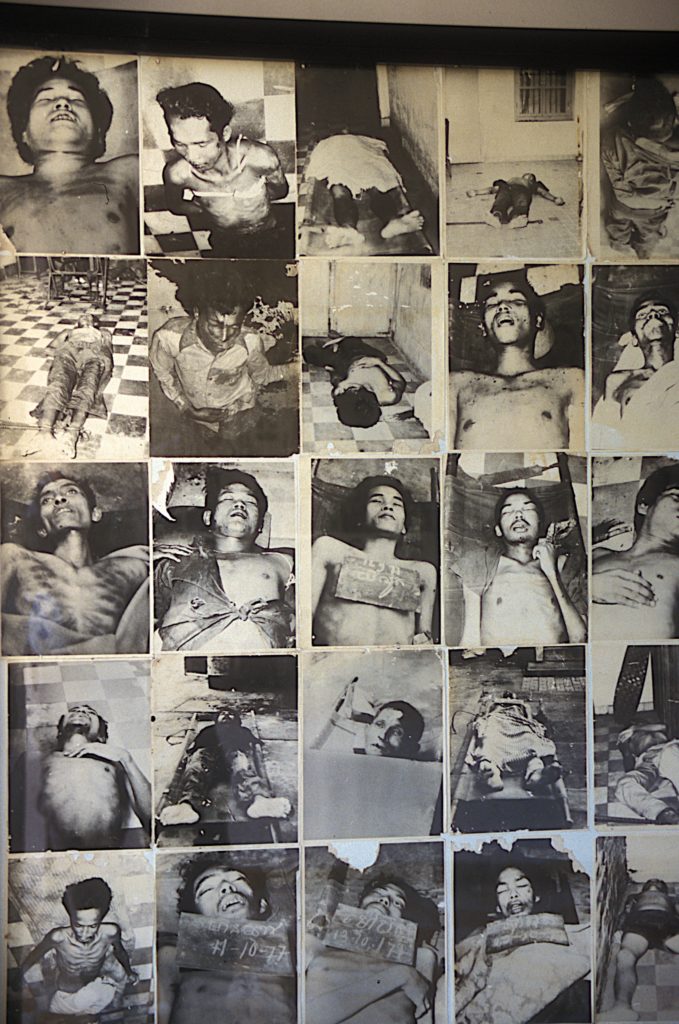

Theme: Right Wing Despots
Athens, Greece (1967): I was retuning to Athens from the Greek islands when the government was overthrown in a coup d’état by a group of far-right colonels, led by Colonel George Papadopoulos. They suspended many liberties and forced the king to flee the country. The citizens’ right of assembly was revoked and no political demonstrations were allowed. They even banned photography in public locations. All transportation stopped for two days. Once allowed to continue, my rental car was stopped continuously by armed soldiers, an edgy experience.
Political/historical observations: Greece became an international pariah abroad and interrupted its process of integration with the European Union (a great irony considering Greece is seen as the birthplace of democracy). This military dictatorship took over the country for the next seven years.
My selected photos (taken surreptitiously) is of a young almost boy-like soldier decked out with rifle and in full ill-fitting military garb; the other shows a tank in the main street of Athens.

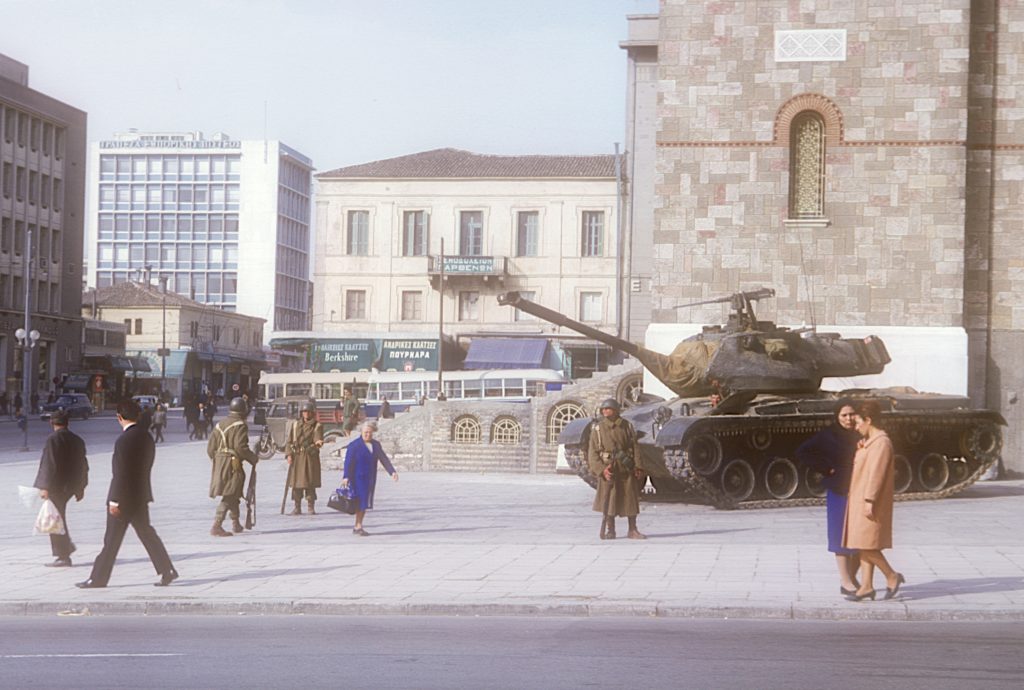
Buenos Aires, Argentina (1984): The “dirty war” was concluding in 1983, the year before I began to travel in Argentina. The military had imposed martial law in 1976, and since that time it has been estimated that from 20 to 30,000 people had simply disappeared. Political dissidents often were heavily drugged and then thrown alive out of airplanes far out over the Atlantic Ocean, leaving no trace of their passing. When I commenced working there, many of the people I worked with knew somebody or had some connection with these unfortunate desaparecidos. There was a visceral anger in their descriptions of what had occurred.
Political/historical observations: When in 1982 the Argentina invasion of the British-held Falkland Islands (Las Islas Malvinas) concluded with a decisive victory for the Brits, the head of the military (and the country), dictator General Leopoldo Galtieri, resigned in disgrace. The next year democracy returning to the country. The new President, Raúl Alfonsín, organized the National Commission on the Disappearance of Persons. Three years later men at the top of the military hierarchies were prosecuted in the Trial of the Juntas for crimes committed during the Dirty War. Several officers were convicted and sentenced for kidnapping, torture, forced disappearance, and murder. This was the only example of such a large scale procedure by a democratic government against a former dictatorial government of the same country in Latin America. It was the first major trial held for war crimes since the Nuremberg Trials.
Then in 1986 the government passed the Ley de Punto Final; this was extremely controversial as it mandated the end of investigation and prosecution of people accused of political violence during the dictatorship. In 2005 the Supreme Court of Justice ruled the law unconstitutional. The government re-opened prosecution of cases, the first of which was against the former Buenos Aires Provincial Police second-in-command Miguel Etchecolatz. It ended in 2006 with his conviction on several counts of kidnapping, torture and murder.
My photo was taken from news coverage of the protest marches regarding the “disappeared”.
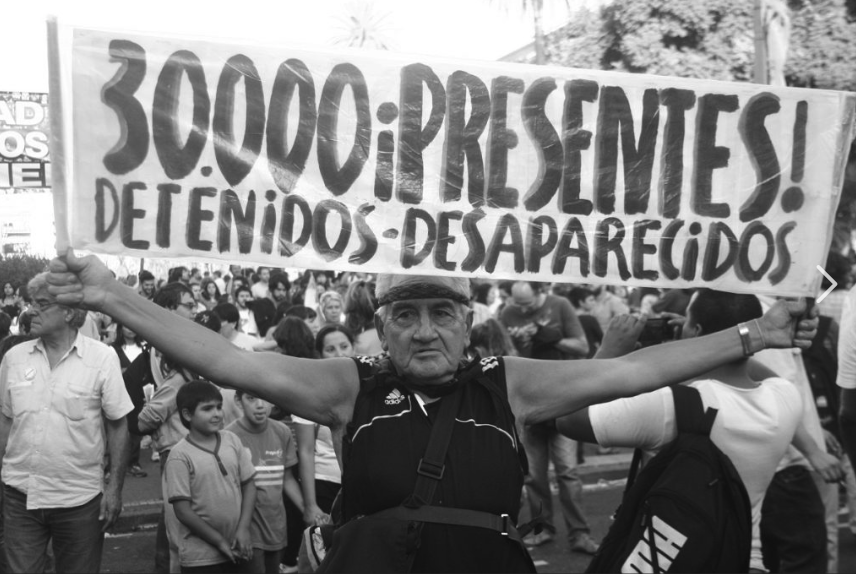
Santiago, Chile (1984): On my first business trip to Chile, being led on a market tour, I naively pulled out my camera to take a picture of Augusto Pinochet’s huge mansion on the outskirts of Santiago. In horror the retail manager for our affiliate tried to stop me and then hauled me back into the car and we sped away quickly. Life under a military dictatorship doesn’t give you the liberty to do such things. During my numerous visits to Chile in 1984 and 1985, demonstrations were widespread. In November 1984, Pinochet declared a state of siege and really cracked down.
Political/historical observations: Pinochet had, in 1973, as head of the country’s military, staged a violent coup d’état (US-backed) and proceeded to eliminate (assassinations, people disappearing, torture) the left-leaning Marxist groups that had been running the country since 1970 under President Salvador Allende. Pinochet banned leftist organizations that supported (democratically elected) Allende, justifying it all by saying he was protecting the country from Communists. The troubles continued, including an attempt to assassinate Pinochet, followed by a new round of terror against the left, all eventually leading to a national plebiscite finally with Pinochet stepping down in 1990. He was arrested in 1998 in London and returned to Chile. He died in 2006, never having stood trial for the crimes for which he was accused.
I actually did take a photo of Pinochet’s mansion and here it is.
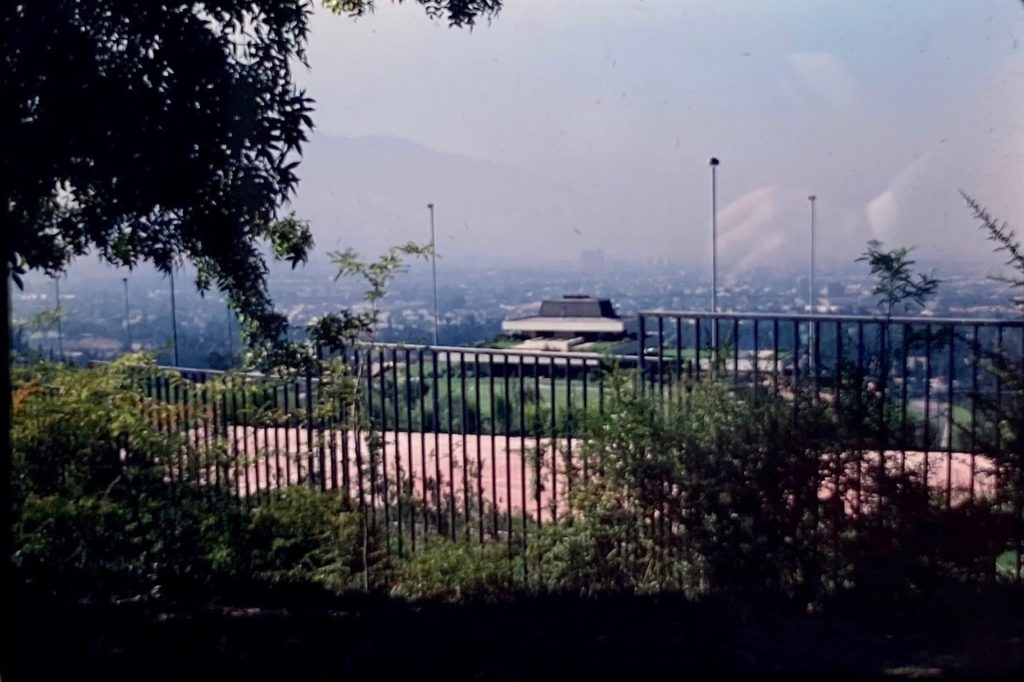
Theme: Religion: Zealots and Proselytizers
New York City, USA (1973): I arrived in the city to work for Exxon early 1973, but this is about what happened almost thirty years later. Shortly after I was able to arrange a visit to the recently constructed World Trade Centre, before it was open to businesses moving in. I was provided a tour to the 80th floor in the South Tower, and took photographs of the open space, before office spaces were blocked out. On September 11, 2001 al-Qaeda launched four coordinated suicide attacks by hijacking passenger flights of which two hit and destroyed the World Trade complex, including this tower along with the North Tower and five other buildings in the Centre complex.
Political/historical observations: The 9/11 hijackers were Islamic terrorists from Saudi Arabia and several other Arab nations. They were allegedly acting in retaliation for America’s support of Israel, its involvement in the Persian Gulf War and its continued military presence in the Middle East. Reportedly financed by the al-Qaeda terrorist organization of Saudi fugitive Osama bin Laden (who American soldiers killed in 2011 at his compound near Islamabad, Pakistan). Ayman al-Zawahiri, then took over as al-Qaeda’s leader. (It is nowspeculated that he too might be dead).
My photo is spooky, upon reflection, considering the fact that the tower, and those surrounding it, no longer exists.

Nairobi, Kenya (2010): When we arrived in the capital Nairobi, the Canadian travel advisory had a caution on entering this country. We spent little time in Nairobi, or as the locals have taken to call “Nairobbery”. But the real problem is more serious than being robbed; it’s one of international terrorism. A few years before we passed through, al-Qaeda operatives bombed the US embassy, killing more than 200 people.
Political/historical observations: Sulaiman Abu Ghaith, a preacher associated with bin Laden, posted an audio recording confirming their 2002 attack on Mombasa. Kenya’s high-profile military presence in neighbouring Somalia has increased the risk of terrorist reprisals. Another 67 were killed in 2013 at a mall and bombs on buses have increased. The tensions continue.
My photo is a scene on the road skirting Nairobi, driving past “street signs” on the way south to Tanzania; note the 50/50 split between church and business advertising.
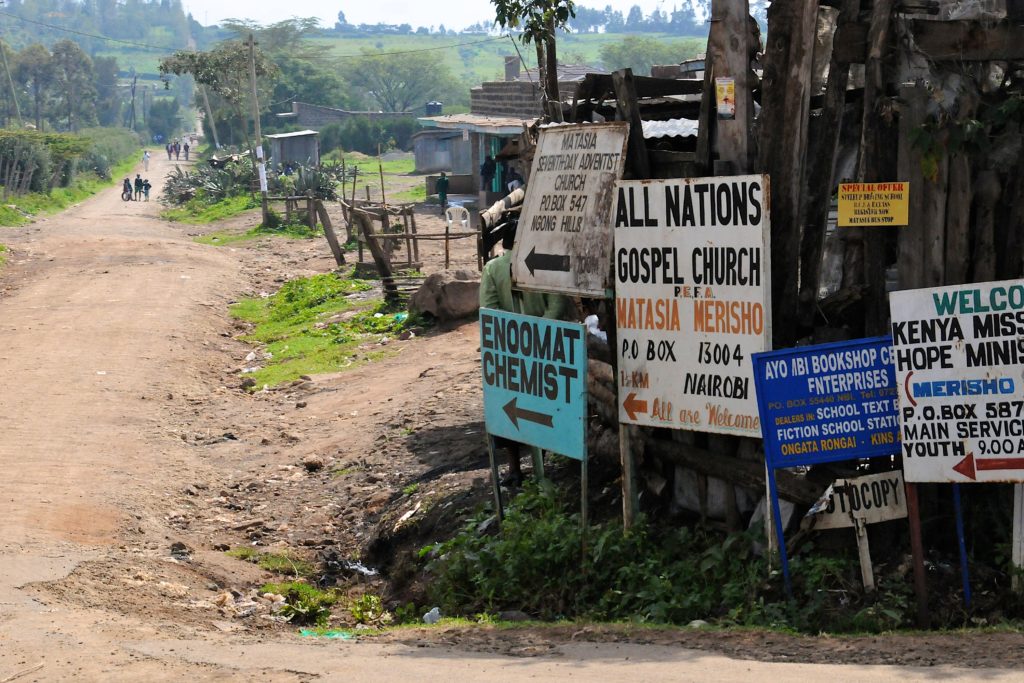
Mumbai, India (1992): I visited this city, then called Bombay, in the early 90s. In 2008, ten Pakistani Muslim terrorists attacked various targets in the city. Three of the targets I had either visited or stayed in; the first being the Oberoi Hotel, where I stayed, the second being the iconic and elegant Taj Mahal Palace and Tower Hotel where I ate and wandered about taking pictures of the landmark Gateway to India monument nearby, and the third was the grand old Victoria (now named Chhatrapati Shivaji) train station. The terrorists killed at least 174 people including 26 foreign nationals in all of these places, and set fires and damaged as much as they could in these targets they considered examples of an India, in the mind of a radicalized Muslim, that had lost its way.
Political/historical observations: Nine of the 10 terrorists were killed, and one, Amir Kasab a Pakistani, was arrested. He admitted that the team of terrorists underwent prolonged guerrilla-warfare training in the camps of Lashkar-e-Taiba, an Islamist militant organization in Pakistan, and at the headquarters of a second and related organization, Jamaat-ud-Dawa. In 2010 he was found guilty and sentenced to death and executed. Pakistan claimed to have arrested Zaki-ur-Rehman Lakhvi, a senior leader of Lashkar-e-Taiba and the suspected mastermind of the attacks. There were concerns that tensions might escalate between the two nuclear-armed neighbours. The UN Security Council imposed sanctions on Jamaat-ud-Dawa in 2008, and formally declared the group a terrorist organization. Similar to the 9/11 attacks, the Mumbai attacks did evoke a strong national and international outcry against such violence and renewed calls to increase efforts to deal with the menace of terrorism.
My pictures are of the Taj Mahal Palace Hotel and inside the train station.

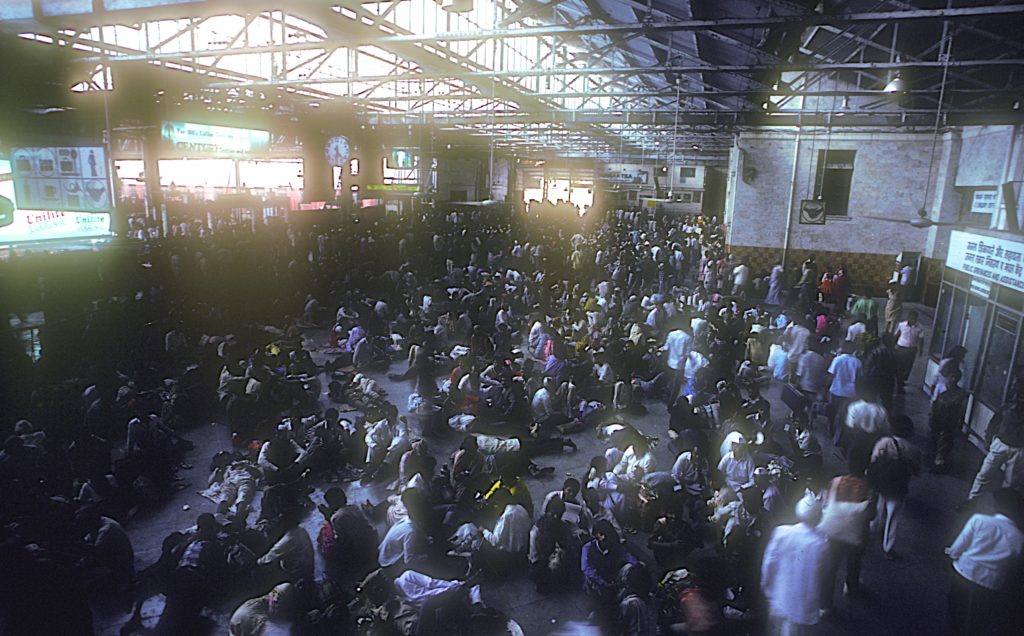
Gallipoli, Turkey (2016): The memorial grave sites just roll by as you travel the area. Gallipoli was the site of one of the most horrific campaigns of the First World War. Fought under appalling conditions, losses on each of the Allied and Turkish sides, totalled more than a quarter of a million soldiers. I place this incident in my religious theme category, as within Turkey the attack by the allied forces in 1915 (and subsequent repelling by the Turks) is seen by the Turks as a turning point in their history. A quote from a Turkish propaganda film I saw about the attack said “the literate ones go to heaven with the Koran on their heads”. This is the only incident in my selections that didn’t happen in my lifetime – but being immersed in the consequences did.
Political/historical observations: The Gallipoli Campaign of 1915-16, (or the Dardanelles Campaign), was an unsuccessful attempt by the Allied Powers to control the sea route from Europe to Russia during World War I. The campaign began with a failed naval attack by British and French ships on the Dardanelles Straits in early 1915 and continued with a major land invasion of the Gallipoli Peninsula on April 25, involving British and French troops as well as divisions of the Australian and New Zealand Army Corps (ANZAC). Lack of sufficient intelligence and knowledge of the terrain, along with fierce Turkish resistance, hampered the success of the invasion. By mid-October, Allied forces had suffered heavy casualties and had made little headway from their initial landing sites. Evacuation concluded January 2016.
My image is a map that visually makes the point regarding the strategic importance of the narrow strait between the Mediterranean and Black Seas.

Belfast, Ireland (1999): One cannot not be startled by a drive around the city, following the “terror tour”where the footprints of the terrorism and sectarian conflict that has existed for so long in this troubled country are unambiguous. Through the assistance of the neighbour of a family friend, who was a member of the Royal Ulster Constabulary, I saw the barbed wire protected towers of police stations dotted around the city, the famous Maze prison where, in 1981, the hunger strike and eventual death by starvation of Republican Bobby Sands took place; the colourful graffiti; the Crumlin, Shankhill and Falls Road areas (hot beds for violence); and the huge murals on the walls of buildings noting key events in the struggles, literally being the “blackboard” of nationalist dissent.
Political/historical observations: As the Irish song goes, “Me father he was orange and me mother she was green!” Whether Protestant (Loyalist) or Catholic (Republican), the tensions were deep and long-lasting. The “troubles” was a complex conflict with multiple armed and political actors. It included elements of the Catholic or nationalist population, principally waged by the Provisional Irish Republican Army (IRA). Arrayed against the IRA were a range of state forces – the Royal Ulster Constabulary (RUC), the regular British Army and a locally recruited Army unit, the Ulster Defence Regiment (UDR). But finally on April 10, 1998, the Good Friday Agreement was signed in Belfast which effectively brought about the end of a sectarian conflict that had divided communities in Northern Ireland for decades. It became a reference for similar agreements worldwide. (Sudan, Bosnia and South Africa are among the countries to benefit from the agreement and have used it as a benchmark as they too emerged from conflict.)
My picture is of one of the many walls painted with the political mottos of the combatants; in this case UVF stands for the Ulster Volunteer Force classified as a terrorist organization by the United Kingdom.
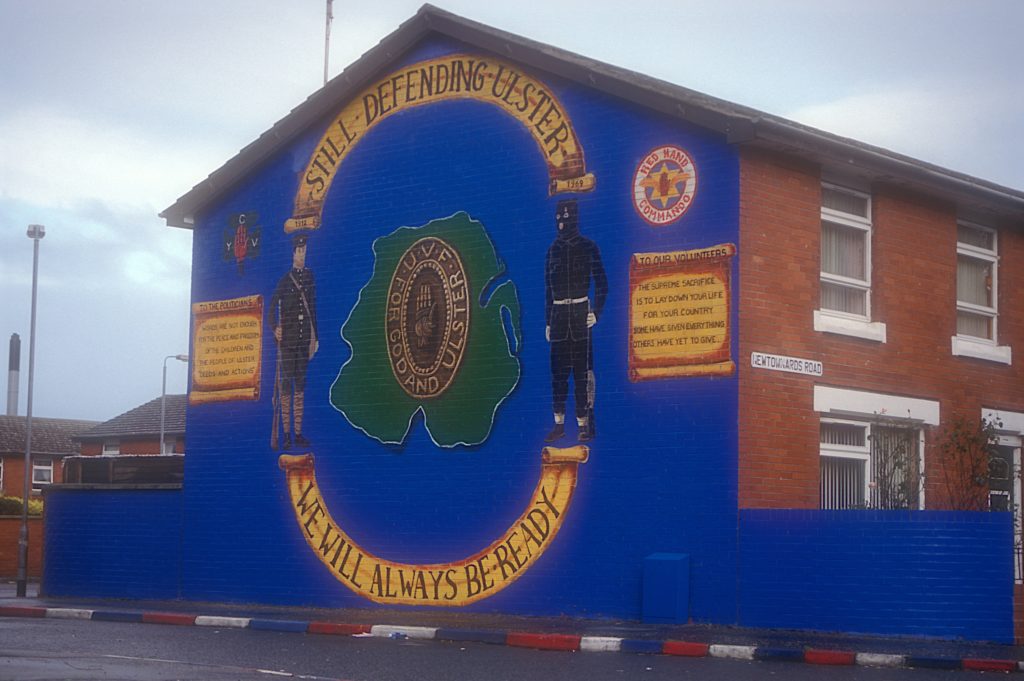
Theme: Race, Apartheid, Culture, Ideology
Cape Town, South Africa (2010): The world knows of Nelson Mandela, and his long campaign to break South African apartheid, the authoritarian political culture based on white supremacy. This philosophy ensured that South Africa was dominated politically, socially, and economically by the nation’s minority white population. I experienced this up close, first with a tour through the townships, full of desperately poor black people living in truly basic conditions. But the boat ride over to and tour around Robben Island, the maximum-security prison where many were incarcerated, was poignant. A former prisoner told the stories in dramatic, emotional and unforgettable terms. I could imagine Mandela, breaking rocks and eating poorly for the 18 years he spent there (of the 27 years he served behind bars).
Political/historical observations: In 1994, voters cast their ballots for Nelson Mandela and his party the African National Congress (ANC) to become the country’s first black leader. That election included all races for the first time and marked the end of white minority rule under apartheid. The ANC’s call for “truth” about the apartheid years, combined with the ruling National Party’s demand for amnesty for many of the perpetrators of apartheid, resulted in the creation in 1996 of a hybrid Truth and Reconciliation Commission (TRC) led by Bishop Desmond Tutu, as a restorative justice body.
It ended with a comprehensive report with concrete proposals for improving the democracy. However the country did not formally introduce any reparation programs, nor did they introduce a “wealth tax”, which would have punished those who gained from apartheid. The country still suffers continued inequality between rich and poor, black and white. The gap between the haves and the have nots is still huge: well over 79 percent are still under the poverty line. With South Africa being the first to mandate a truth and reconciliation commission, it has become a model for other countries.
My photos include a grim township scene along with a “For use by white persons” sign. The third is the inside of a typical prisoners cell on Robbin Island.
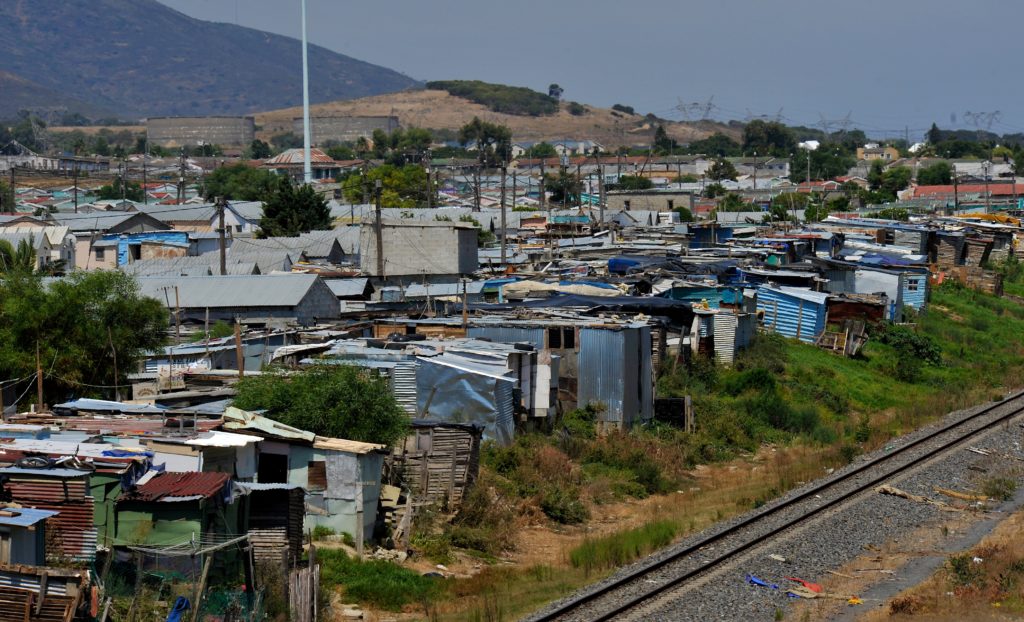
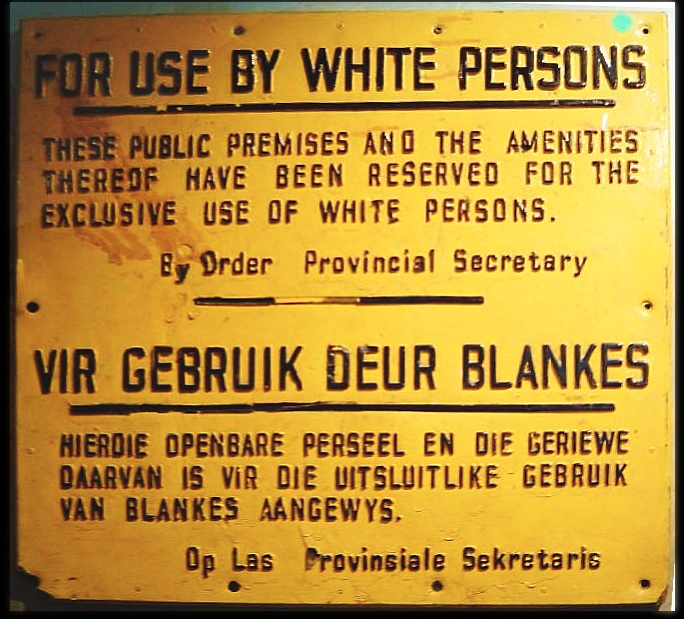

Dubrovnik, Croatia (2011): Walking along the top of the fortification walls surrounding the Old Town of Dubrovnik, I could look down on the buildings squashed into this ancient section. During a period in 1991 shells from the Yugoslav People’s Army (JNA) struck 68% of the 824 buildings, leaving holes in two out of three houses. Visiting there, years later it’s hard to imagine anything of the sort, as they’ve reconstructed the buildings.
Political/historical observations: The cultural and political factors of this conflict are complicated, but the end result is that the conduct of the JNA and the Serbs was deemed barbaric with the intent on dominating Croatia. The bombardment provoked international condemnation, and became a public relations disaster for Serbia and Montenegro, contributing to their diplomatic and economic isolation, as well as the international recognition of Croatia’s independence. A Yugoslav Navy commander, Miodrag Jokic, pleaded guilty at a United Nations court to war-crimes charges based on the deadly shelling of Dubrovnik.
My photo is looking down from the walls surrounding the Old Town of Dubrovnik, showing how the city has been restored.

Osijek, Croatia (2018): During lunch, arranged so that we could meet local citizens, Nadda our hostess, after some prodding, gradually talked about her memories of the 1990 to ’94 Yugoslav Wars first in Croatia, and then multi-ethnic Bosnia and Herzegovina. The wars left long-term economic and political damage in the region, still felt there today. Weeping at times, she talked quite emotionally about the conflict from her perspective as a 12 year old in an era of little food and water, living in their basement and then losing and not finding her young cousin. She acknowledged that tensions still exist between the Serbs and Croatians. I have the whole conversation on video, as for some prescient reason I had a feeling that it might be important to turn on my camera.
Political/historical observations: There has been some justice meted out resulting from the ethnic cleansing attempts in former Yugoslavia (and surrounding geography). Slobodan Milošević, as Serbia’s president in the 90s, pursued Serbian nationalist policies that contributed to the breakup of the socialist Yugoslav federation. Then as president of Yugoslavia he was arrested by the Yugoslav government in 2001 and turned over to the UN’s International Criminal Tribunal for the Former Yugoslavia (ICTY) for trial on charges of genocide, crimes against humanity, and war crimes. He died in prison.
In 2016 Radovan Karadžić, sometimes referred to as the “Butcher of Bosnia” went before the International Criminal Tribunal for the former Yugoslavia (a body of the UN established to prosecute serious crimes committed during the Yugoslav Wars). He was found guilty of the genocide in Srebrenica, war crimes, and crimes against humanity and sentenced to 40 years’ imprisonment.
My photo is of Nadda talking to us at lunch.
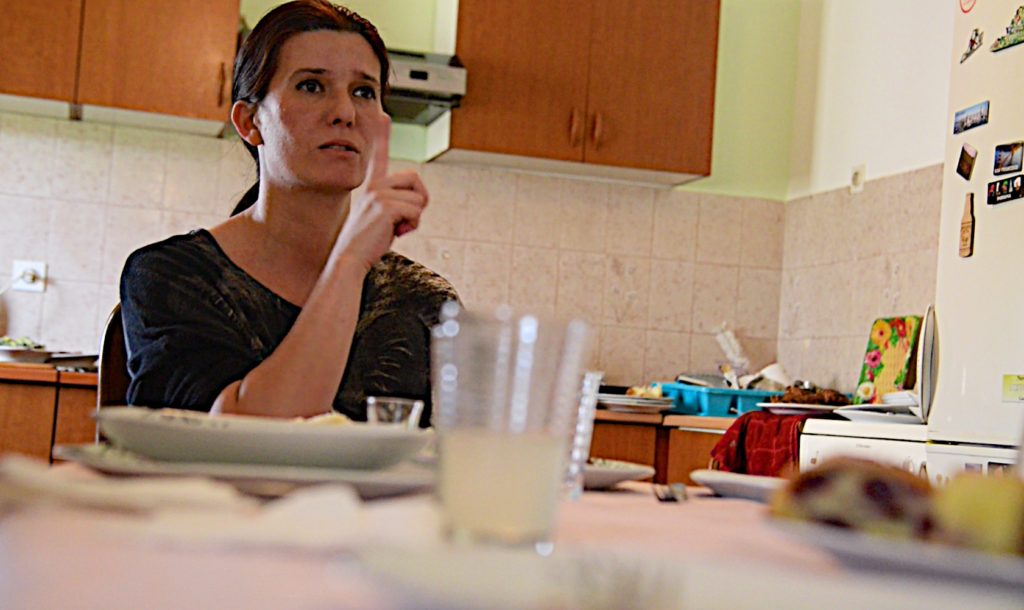
Sinai/Cairo/Nile River, Egypt (2008): Exiting Jordan in a van and crossing the Sinai Peninsula, security checks were constant. When we decided to travel south up the Nile all the way to Abu Simbel at Aswan (we travelled the full length of the Nile in Egypt), our tour car was followed by police; an armed guard was also present with us in the vehicle. We went through stops where the undercarriage was inspected for explosive devices. In certain place we were not allowed to walk around without an armed guard accompanying us.
Political/historical observations: In the recent past Egypt had experienced a series of terrorist attacks by violent Islamists, motivated by extreme interpretations of their Islamic holy books (the Quaran, etc.) In Cairo a bomb had exploded in a very old part of the Khan al-Khalili market a few months after our visit killing a young girl and wounding 22 others. In 1997 at an archaeological site across from Luxor, a massacre resulted in officially killing 62 people, mostly tourists. Our inside information has suggested the number was more like 450 tourists – the real total played down for press consumption. (The attack was led by Mustafa Hamza, the commander of an Egyptian Sunni Islamist terrorist group dedicated to the overthrow of the Egyptian government and replacing it with an Islamic state. It is believed he also took part in the 1981 assignation of Egyptian President Anwar Sadat and the attempted assassination of past President Hosni Mubarak. He was charged and then pardoned in 2012.)
A few months after we passed through the Western Desert, tourists were held hostage for ransom. While there is a history of persecution and terrorism aimed at Egypt’s Coptic Christians, terrorism targeting tourists affects the whole economy which is so tourist-dependent. All this underscores the reality that Egypt remains a troubled place.
My photo is of two of our “Tourismas Antiquities Police” in Luxor.

Skedans, Haida Gwaii, British Columbia (2006): We boated to a small peninsula in the south tip of this archipelago (formerly Queen Charlotte Islands). There remains the structures of twenty-six long houses, touching evidence of an abandoned Haida village. The totem and mortuary poles of the former village gracefully decay and the house beams have been left to fall back to the earth. We were the beneficiaries of the Haida Watchmen Program which train Haida people to protect and interpret the natural and cultural heritage of these sites. The village was abandoned in 1878 due to a smallpox epidemic.
Political/historical observations: In 1862 a smallpox outbreak in Victoria, BC was allowed to spread among indigenous peoples; forced evacuation was carried out despite awareness that it would result in a major epidemic. The disease ravaged the Haida, where over 70% of the population died. The pre-epidemic population of Haida Gwaii was estimated to be 6,607, but was reduced to 829 by 1881.
Fast forward to 1987, the governments of Canada and BC signed the South Moresby Agreement, establishing the Gwaii Haanas National Park, which is cooperatively managed by the Canadian government and the Haida Nation. The Haida people have lived on the islands for 13,000 years; they currently make up approximately half of the population. The Haida now exercise their shared sovereignty over the islands through their acting government, the Council of the Haida Nation.
This is all part of the uncomfortable relationship white settler Canada has had with the First Nations people that preceded them in the territory of Canada. Between 2008 and 2015 and organized by the parties of the Indian Residential Schools Settlement Agreement, Canada had its own Truth and Reconciliation Commission. In 2015, the TRC released its findings along with 94 “calls to action” regarding reconciliation between Canadians and Indigenous peoples. The Commission’s final report concluded the school system amounted to cultural genocide.
The photo memory is of carved totem poles in Gwaii Haanas, left to deteriorate naturally, as is the custom. Massive carved cedar monuments and cedar big houses were widespread throughout Haida Gwaii.
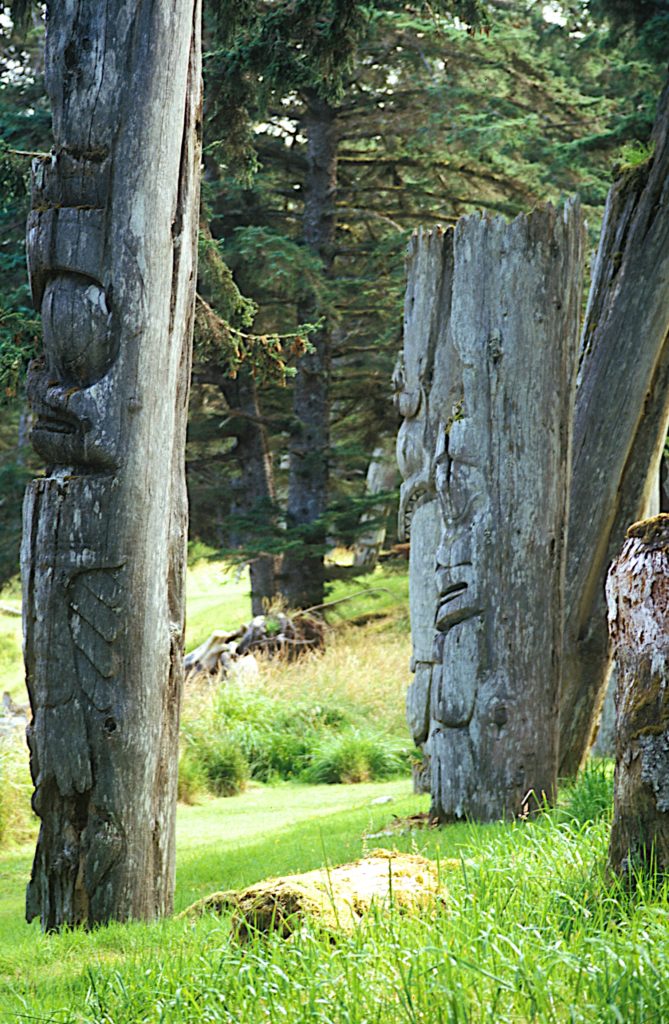
Theme: Drug Cartels
Bogotå, Colombia (1984): When I first arrived in Bogotå I was given strict instructions not to venture anywhere without an escort. While a representative democratic republic, Colombia was having big problems. The Medellin drug cartel (& the Cali cartel) surged to power in the 1980s, run by Pablo Escobar. The year before my first visit a local guerrilla group had kidnapped one of our Exxon staff, a US citizen. They demanded money for his return (it was rumoured the ransom was 10 million dollars). Over the years Colombia is the country in which more people have been kidnapped than anywhere else in the world.
The company didn’t want a repeat performance. When I arrived at the airport I didn’t even get processed through customs – I was taken straight to a limousine and, with an escort car in front and one in the rear, they took me to my hotel. Looking out from one side of my hotel was a view of the massive slum area of the city; hardly a car is seen on the main street. Looking the other direction is a thriving skyscraper-loaded, car-busy city. It was pointed out to me that the police choose to avoid the former, and so of course, should I.
Political/historical observations: Drug lord Escobar distributed cocaine establishing a crime network that at its height trafficked around 300 kilos per day. By 1982, cocaine surpassed coffee as the chief Colombian export. However, what was going on in Colombia was greater than just the drug game. During the Cold War period an organization called FARC (Fuerzas Armadas Revolucionarias de Colombia or Revolutionary Armed Forces of Colombia) was formed as a Marxist-Leninist peasant force promoting a political agenda of agrarianism and anti-imperialism. The operations of FARC were funded by kidnap and ransom, illegal mining, extortion and taxation of various forms of economic activity, and the production and distribution of illegal drugs.
FARC in its later years was also noted for its use of violence for political aims and its war against the Colombian government, primarily in the form of bombings, kidnappings, indiscriminate murder of law enforcement and political assassination. Right after my trip the government signed a truce with FARC – the first cease-fire ever agreed to by any Colombian rebel group. It didn’t last, and that’s the history of the country. As soon as deals are concluded, they are broken. The cost to the country is enormous; for example 220,000 people have died in the conflict between 1958 and 2013, most of them civilians.
My photo selection is of the slum area behind my hotel.
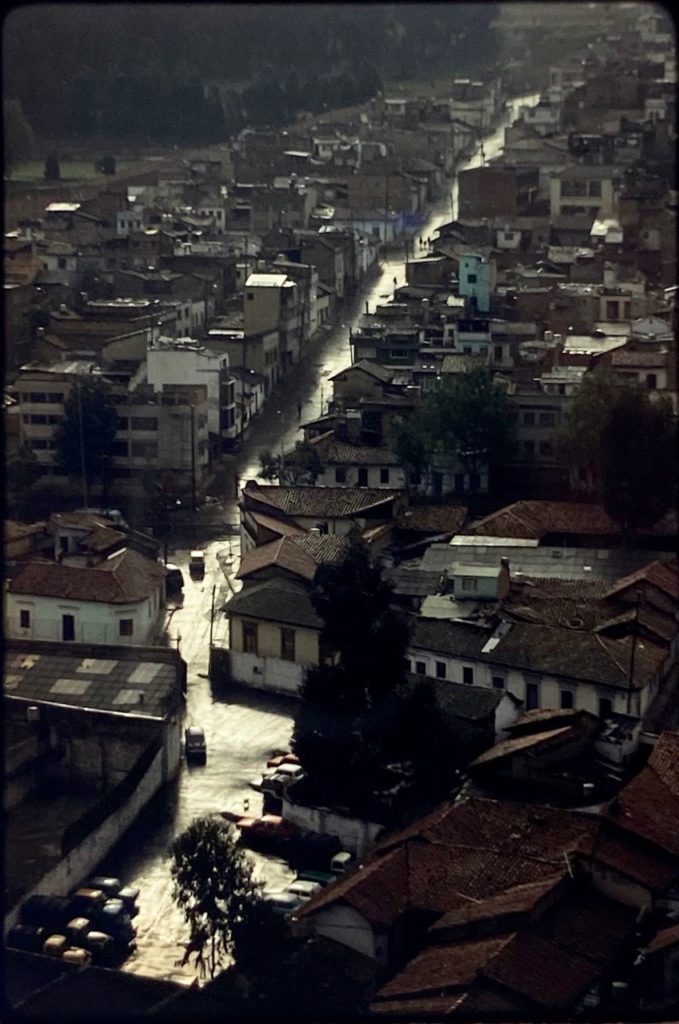
There are other examples of places I have travelled that would provide interesting historical lessons associated with what I consider to be their dark sides. Three of the ones I am following with close interest are China and it’s relationship with Hong Kong and Taiwan (plus all of its other aggressions, as I have written about in my China blog, September 2020; see: https://powellponderings.com/china-how-should-canada-the-world-deal-with-this-state/); Russia and Turkey both individually and in their relationship as countries; and Myanmar, including conversations had, while travelling through that troubled country, about the role of the military and that of icon or pariah, Aung San Suu Kyi.
Conclusions
1. Travel begets knowledge/understanding. This rather obvious conclusion suggests that the act of exploring a country, however innocently it commences, can result in the kinds of discoveries I have related. It would be highly unlikely that I would be writing this blog, in this way, with this sense of understanding, if I had never set foot in any of the places I’ve described. I find myself listening to or reading material about a country in the news more intensely, with a greater interest and perhaps understanding, if I’ve been there.
2. Recording history needs reflection and facts not always available at the time history is being made. What really is the truth about history has always been a difficult concept. Reading Tony Judt’s book Post War, I realized how much had been going on around me that I did not know about, or had a different understanding than what really happened – and it was all about MY history. Thank goodness for historians who dig into secret correspondence, government documents etc. that allow us to reflect accurately and draw important conclusions, and Judt did just that. Certainly whatever the true situations that were going on over the many important events of the time were not reaching me for a variety of reasons (political expediency, security, etc.) or even the absence of the real truth available to the players at the time.
3. History is vulnerable to interpretation. Who gets to decide what happens yesterday? To refer again to Erna Paris’ book Long Shadows, the past is forever being managed to suit the perception of our present needs. How countries shape historical memory in the aftermath of calamity is a critical issue. There is a constant risk of schisms occurring between real and “official” histories. We need history (the study of/the reflection upon) to place the past in context, as a way of providing “perspective” on the problems of the present. Sure, history is embedded with bias because events and known facts in history can be interpreted in a variety of ways. Also parts of history can just be forgotten, as an intentional part of the narrative dictating what areas are remembered.
Paris makes her point with reference to the US and how it deals with the Jan 6 attack on the US Capitol. She feels that America is trapped in a “narratives interregnum”. That we can apparently get used to anything is historically evident – and potentially dangerous. Struggle for ideological control of the Republican Party will depend on how the events are defined for the future.
4. Males drive conflicts. I know of no major conflicts that have not been led by the male species. The greatest villains of history have all been male: Tiberius, Caligula, Ivan the Terrible, Attila the Hun, Vlad the Impaler, Genghis Khan, Adolph Hitler, Joseph Stalin, Vladimir Lenin, Hideki Tōjō, Pol Pot, Mussolini, Leopold II, Tito, Abu Bakr al-Baghdadi, Osama bin Laden, Idi Amin, Saddam Hussein, Bashar al-Assad, the three North Korean Kims, Mao Zedong. I have highlighted key figures in my twenty-six travel stories and they’re all male. Sure, males have dominated politics, so they’ve led in villainy. Can also one of the reasons be that females lean to nurturing roles and rarely to wars and fighting?
5. Strategies chosen regarding conflict are usually combative ones – with significant deleterious consequences. It appears that over the span of history I have covered (and likely the span of world history – although not being a historian I’d need a more professional opinion) the chosen strategies to conflict and expansion of ideology are primarily military in nature; they are the default solution as opposed to the options of compromise and negotiation. Further, these conflicts have had the unfortunate consequence of wiping out an inordinate number of young men who carry out the low-grade battlefield fighting, in the process, not to mention the collateral damage to innocents, and massive wasted capital and environmental damage.
6. New forms of justice and reconciliation have been emerging. There are emerging in my lifetime, and at long last, attempts to impose forms of justice under new benchmarks of international human rights. For example, after WWII the Tokyo War Crimes Tribunal was established. As well, the International Court of Justice (ICJ) – called the World Court – in The Hague was formed. It is the principal judicial organ of the United Nations (UN) and was established in June 1945 by the Charter of the UN. Since Nuremberg, no one is exempt from international law. Additionally, the Truth and Reconciliation Commissions in South Africa, Argentina, Croatia, Cambodia, Canada, etc. are examples of methodologies being pursued with varying degrees of success. To the victor does not always go the spoils, although in some of the above narratives there are failures.
7. Religion can be a force for evil, as well as good. I have always railed against doctrinaire positions, and the vast multitude of formal religions have them as their stock in trade. Once creeds are determined, and righteousness assured, and misology buried deep, there is nothing more resistant to compromise. Religious leaders are also predominately male. Religious leaders have a moral responsibility to look beyond dogma and the nuances of religious texts. I have little hope this will broadly happen. The accounts I have related in this document contain so many fanatics, extremists, radicals, dogmatists – similar to my list of extremist groups and conspiracy theorists in my Feb 21 blog (in the main blog – https://powellponderings.com/intractable-issues-in-the-u-s-and-the-role-of-media-social-media/. The attachment contains the detail: https://powellponderings.com/attachments-to-blog-on-intractable-issues-in-the-u-s-and-the-role-of-media-social-media/)

8. Tourism and terrorism are a bad mix. This one is also self evident, but the future consequences may be significant. The connection between terrorism and tourism has been widely studied since the 1997 Luxor massacre in Egypt. Researchers studying the subject said that “Random acts of terrorism curtail travel activity until the public’s memories of the publicized incidents fade. Persistent terrorism, however, can tarnish a destination’s image of safety and attractiveness and jeopardize its entire tourism industry.” This immense industry is under pressure from environmental realities and viruses; terrorism just adds another huge curse.
9. Most travel experiences are positive, uplifting and expansive. While I have described incidents that might seem dark, the reality is that most travel experiences are quite the opposite, full of activities that drive one to engage the world positively in the first place.
Thanks Ken,
I always learn so much from your blogs. Have read so much about the World Wars but don’t know much about South America
My son loves history so I send them on to him
See you golfing soon
Regards A.J.
Hi Ken
I always enjoy your blog posts but the latest one was exceptionally interesting. You have been to so many interesting places over the years and your impressions and experiences in the various countries were fascinating. I loved how you organized the blog and how you provided historical information of the political situations in the various areas.
I also enjoyed the article on your Covid vaccination experience!
Pam
Ken
This was an interesting read. You have travelled with a purpose and it shows.. Your blog is full of details. You must have had a notebook along with your camera. Travel history 101.
Thanks for sharing.
Lionel